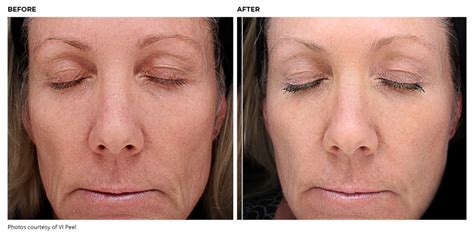Chemical Peel Frequency: Avoid These Pitfalls
Chemical peels offer a fantastic way to rejuvenate your skin, tackling concerns like wrinkles, acne scars, and uneven pigmentation. But the key to achieving optimal results and avoiding potential harm lies in understanding the appropriate frequency. Overdoing it can lead to several pitfalls, hindering your progress and potentially damaging your skin. This article delves into the ideal frequency for chemical peels, highlighting common mistakes and offering expert advice to ensure a safe and effective treatment journey.
What Determines the Ideal Chemical Peel Frequency?
The perfect frequency for chemical peels is highly individualized and depends on several critical factors:
-
Peel Strength: Lighter peels (like superficial peels using glycolic acid) can be performed more frequently than deeper peels (like medium or deep phenol peels). Deeper peels require significantly more downtime and carry a greater risk of complications if performed too often.
-
Skin Type: Sensitive skin requires a more cautious approach, with longer intervals between peels. Thicker, oilier skin may tolerate more frequent treatments.
-
Skin Goals: If you're targeting minor imperfections, less frequent peels might suffice. For more significant concerns, a more structured treatment plan with appropriately spaced sessions might be necessary.
-
Individual Skin Response: Your skin's reaction to the initial peel will guide subsequent treatments. If you experience significant irritation or prolonged redness, you'll need to increase the time between sessions.
-
Doctor's Recommendations: Always follow your dermatologist's advice. They will assess your skin and tailor a plan that aligns with your specific needs and goals.
H2: How Often Can You Get a Chemical Peel? (Common Questions & Answers)
This section addresses common questions surrounding chemical peel frequency, drawn from real user searches and concerns:
H3: Can I get a chemical peel every month?
Generally, no. Monthly chemical peels, especially stronger ones, are often too frequent and can lead to irritation, inflammation, and potential scarring. The skin needs time to heal and regenerate between treatments. Lighter peels might be done more frequently under a dermatologist's supervision, but even then, monthly might be excessive for many.
H3: What happens if I get a chemical peel too often?
Overdoing chemical peels can result in several negative consequences, including:
- Excessive Skin Irritation: Redness, burning, and inflammation are common side effects of overly frequent treatments.
- Increased Sensitivity: Your skin becomes more susceptible to sun damage and other irritants.
- Hyperpigmentation: In some cases, excessive peeling can lead to post-inflammatory hyperpigmentation (PIH), causing dark spots.
- Skin Thinning: Repeated chemical peels can thin the skin, making it more vulnerable to damage.
- Scarring: In extreme cases, overly aggressive or frequent treatments can lead to scarring.
H3: How long should I wait between chemical peels?
The waiting period varies depending on the peel type and your skin's response. For superficial peels, it could be as little as 2-4 weeks, while medium peels require several months (often 4-6) of healing time before the next treatment. Deep peels often necessitate a year or more before a subsequent procedure.
H3: Are there different types of chemical peels and how does that affect frequency?
Yes, there are different types based on their depth of penetration:
- Superficial Peels: Target the epidermis (outermost layer). These can be performed more frequently, sometimes every 2-4 weeks. Examples include glycolic acid and lactic acid peels.
- Medium Peels: Penetrate the dermis (middle layer). These require longer intervals, typically 4-6 months apart. Trichloroacetic acid (TCA) is a common ingredient in medium peels.
- Deep Peels: Reach the deepest layer of the dermis. These are the most aggressive and require the longest healing time, often a year or more between treatments. Phenol is typically used in deep peels.
Avoiding the Pitfalls: Tips for Safe Chemical Peel Treatments
- Choose a Qualified Professional: A board-certified dermatologist or aesthetician with extensive experience in chemical peels is crucial.
- Honest Consultation: Discuss your skin history, concerns, and expectations openly with your practitioner.
- Realistic Expectations: Chemical peels are not a miracle cure. They require patience and a realistic understanding of the results you can expect.
- Proper Aftercare: Follow your practitioner's aftercare instructions diligently to minimize irritation and promote healing.
- Sun Protection: Sun exposure is a major risk factor for hyperpigmentation and other complications. Use broad-spectrum sunscreen daily, even on cloudy days.
By understanding the factors influencing chemical peel frequency and following these recommendations, you can significantly reduce the risks and maximize the benefits of this popular skin rejuvenation treatment. Remember, prioritizing your skin's health and choosing a qualified practitioner are essential steps to achieving a safe and successful outcome.

